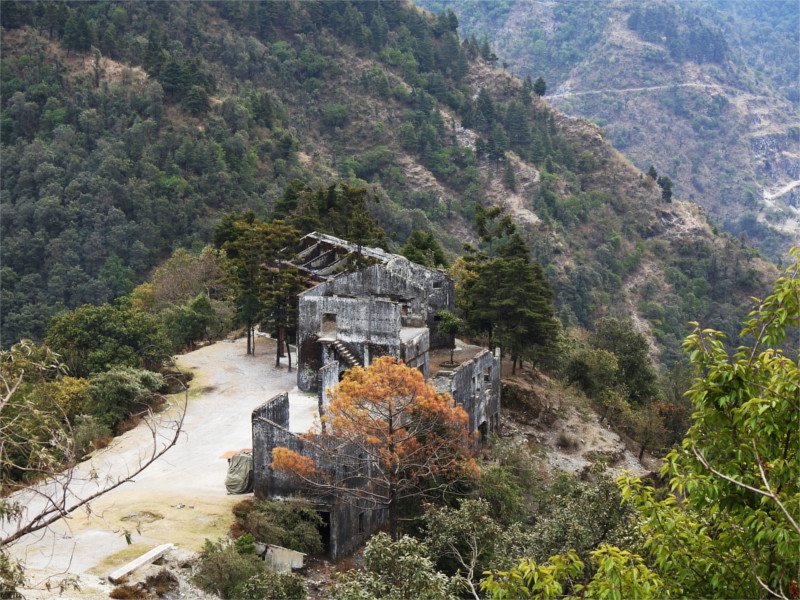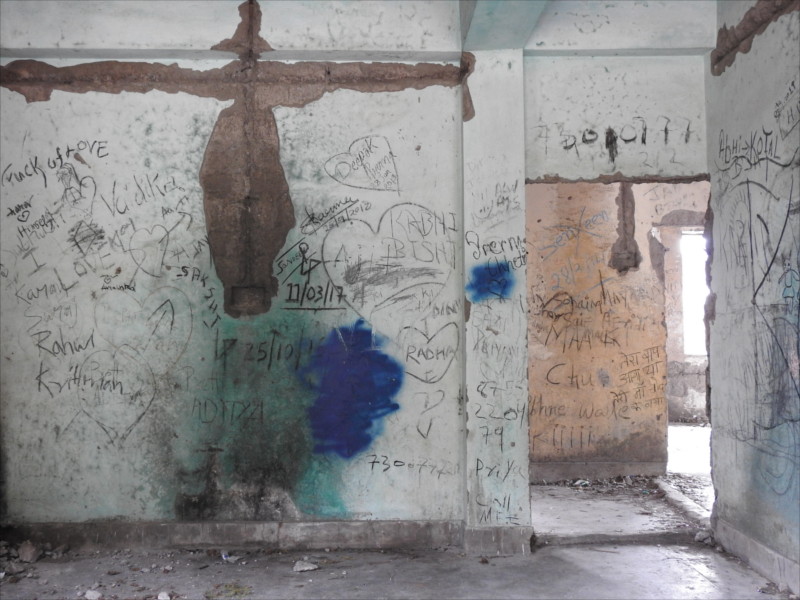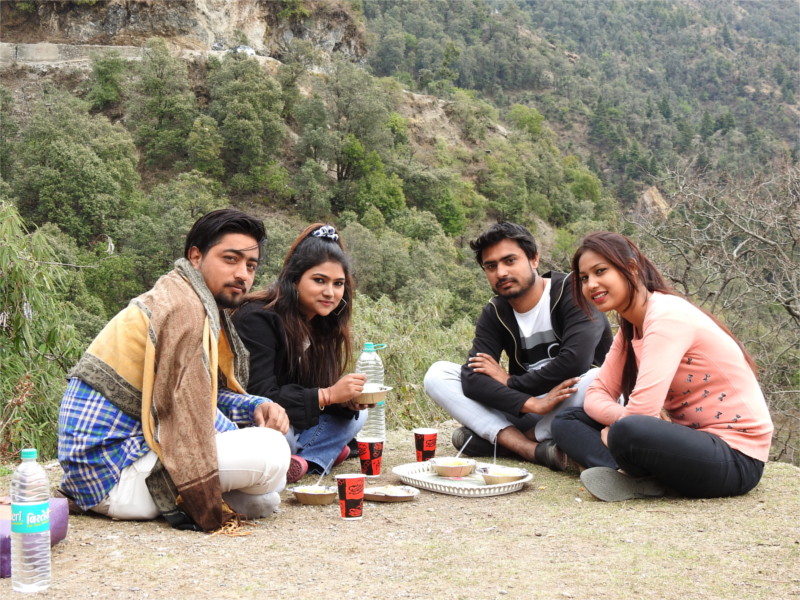While trying to make a list of interesting places to see in Mussoorie I came across a story of the Lambi Dehar mines outside the town. According to various travel sites (who copy from each other) this is the most haunted place in India: everyone who goes there dies a horrible death, the mysterious screams of half a lakh dead miners ring through this valley, the blood-thirsty laughter of a witch can be heard at nights, there are no birds or beasts around the mines. “Exactly the kind of place I want to see,” I told The Family. It was marked on the map I usually use, so finding the way would not be a problem.
The day we set aside for this started nice, but there was a prediction of a thunderstorm with hail later in the day. By the time we passed Library Bazaar the sky was grey, and wan light was exactly the kind which is best for viewing ghosts. The road was very good, but completely deserted. Our first view of the remains of the mines was perfect (see the featured photo). The road passes a little above the buildings. We stopped the car there and walked down the slope to the buildings. Nitin was happy to remain with his car. The surrounding forest of Banj Oaks (Quercus leucotrichophora) was slowly changing colour, but there was a spectacular orange tree, which I didn’t recognize, in the little clearing we walked down to.
While I was channeling the spirit of the Chipko movement, The Family had located the spirit which haunts the place. The soft-spoken young man was a fount of information. “Yes, people do say this is haunted,” he admitted. When The Family asked whether he didn’t feel afraid, he smiled bashfully. “Lots of people come here,” he said when we asked about tourists.
That’s why he was there, of course. He runs the little shop in an auto which you see above. I could see that it would be possible for the auto to drive up to the road where Nitin was parked. He smiled again when I asked him if this was the best place for customers. I thought that the side of the road above this place would be a better location, but apparently he preferred to be here in this quiet place. I could see why. I was beginning to relax into the slow rhythm of the place, the bad light, the little chirps of birds.
The abandoned offices of the mining company had become a canvas for artists, and, of course, lovers. I liked that drawing of a smoker. The idea of alienation seemed odd in these hills, but the exhortation not to become a robot meant that young people here do feel it. Perhaps it is intrinsic in the society we live in. Looking at the ruins, I realized that words and stories come much more easily to us than images. A few paintings, but so much scribbling!
Behind the buildings, in a secluded area these four young people had spread out a picnic. They did not mind me taking a photo. I asked, “You don’t happen to be ghosts, do you?” Laughter ensued, not at all blood-curdling. “No more than you are,” one of them said. I wondered about the internet-wide story of 50,000 miners dead in these mines. If that had ever happened it would have been an enormous disaster. No mining disaster in this area is recorded. Moreover a mining company which employed 50,000 miners in one site would have to leave a huge footprint in media. So what was the real story? The internet has replicated the false story so many times that reality cannot be found by searching for “Lambi Dehar”. A few drops of rain fell as we made our way back to the car.
I was pointed to the real story by this blog. As I’d suspected, the Lambidhar mines, to give it its earlier name, was one of the many limestone quarries in this area which was forced to close by a decision of the Indian Supreme Court in 1996. There is no record of a disaster. After that this site was taken up as a research station in the restoration of the normal ecology of this area. A seven year long project found that eco-restoration improves soil characteristics and allows the oak forest to get a foothold in the area (for example, see this paper). However, when we looked at the quarry site from the road (photo above), it was clear that more than twenty years after closure, the scars of quarrying are still clearly visible. Sadly, reforestation will not be easy. There may be no ghosts here, but Lambidhar tells us that the ghosts of our profligacy will haunt our children for long.












